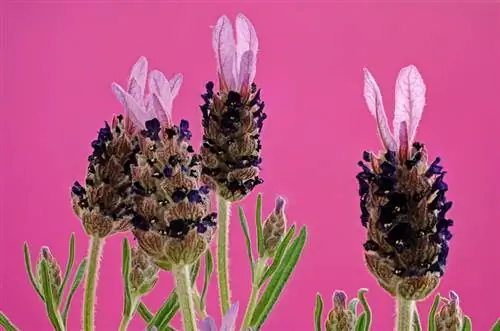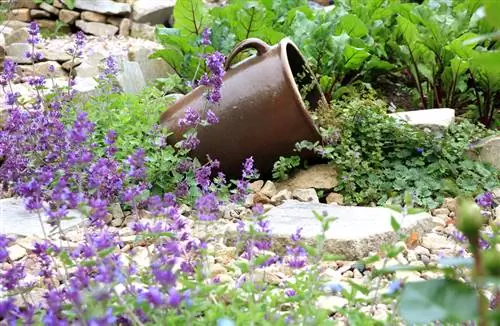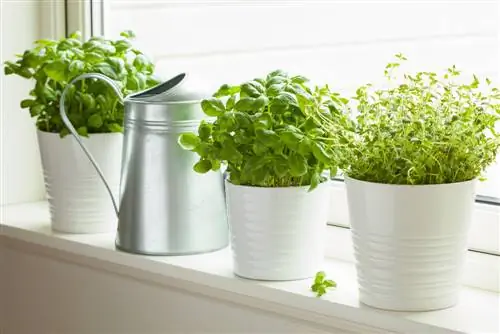- Author admin [email protected].
- Public 2023-12-16 16:46.
- Last modified 2025-06-01 06:02.
Herbs simply belong in every garden - they can be used in many ways in the kitchen and for the medicine cabinet, they smell and look pretty - and seem all the more harmonious to us the more suitable the bed is designed for them. Here we have collected a few suggestions for you.

How to create a herb garden?
To make a herb garden appealing, combine culinary herbs, medicinal plants and flowering herbs, divide areas with stepping stones or paths and use borders made of shrubs, stones or wooden planks.
Herbs in the kitchen garden
Whether as a spice, medicinal or fragrant plant, herbs are brought into every household. It is therefore difficult to do without a kitchen herb garden, although you do not necessarily have to own a garden. Instead, most herbs can also be cultivated on the balcony, windowsill or even in the kitchen. But first here are a few tips for the kitchen garden in front of the house:
- The herb bed should be at least 10 square meters in size.
- Fence it with herb hedges of sage, thyme, hyssop or lavender.
- Divide the bed area according to the use of the individual herbs.
- Classic culinary herbs (chives, parsley, dill, marjoram), Mediterranean herbs (basil, oregano, rosemary, thyme), tea herbs (fennel, mint, chamomile, anise hyssop) and herbs with edible flowers (borage, mallow) are grown here, nasturtiums, marigolds) planted in matching groups.
- Divide the individual areas with small paths and stepping stones.
- These also ensure that all herbs are easily accessible.
Colorful diversity - herbs and flowers
Among the medicinal and aromatic herbs, there are a variety of varieties with interesting shapes and colors. Colorful leafy herbs and herbs with eye-catching flowers enrich borders or the natural garden and can be wonderfully combined with ornamental plants. They can be combined very well with various magnificent perennials and roses - the rose and lavender duo, for example, are often put together, even if it is somewhat problematic due to the different needs of the two groups of plants. Herbs such as elecampane, fennel, lovage, milk thistle or angelica are very suitable as solitary plants. They provide an eye-catching variety in the flower bed.
Suitable bed borders for the herb garden
Many herbs are very vigorous and tend to break out of their beds. If the shape of the bed is to be retained in the long term, bed edging can help. Suitable for this:
- Subshrubs such as lavender, sage, curry herb, thyme etc.
- Box and other low hedges
- Stone surrounds (bricks, natural stone, concrete)
- Wooden planks (especially long-lasting woods such as larch, robinia, oak)
- Wave fences
Remember that hedges need to be trimmed regularly to keep them attractive - and also not to rob the herbs growing in the bed of light.
Tip
Annual and perennial herbs grow together in a bed. It is important that the annuals change location every year and that perennials have enough space.






